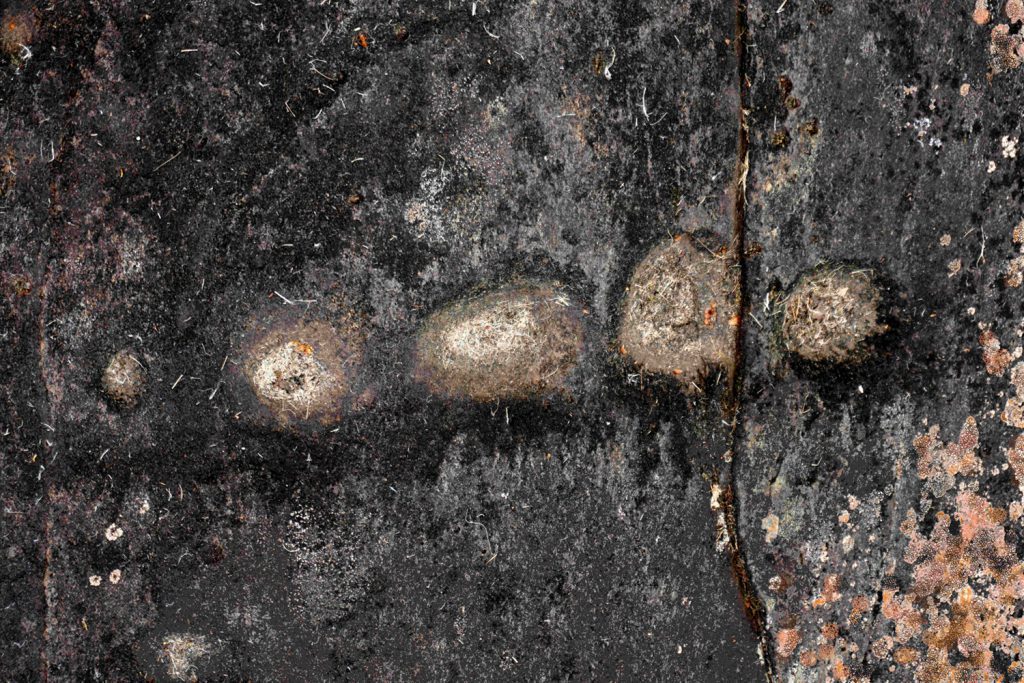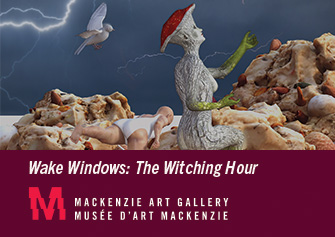Methods of Parallax: Works by Robin Kingsburgh and David Griffin
6 August 2020
By Shannon Foskett
“Science does not have a monopoly on empiricism,” historian David Topper once noted, arguing that empirical matters are, in fact, “germane to all visual imagery.” (1) Recognizing the role of visual images in the production of theoretical knowledge means understanding that their value extends beyond mute illustration to their unique capacity for discovering and articulating new information. An elegant case in point is trigonometric parallax—the “gold standard” of geometric measurements—first developed by Hipparchus (190-120 BCE), and still used by today’s astronomers for determining the moving edge of our expanding universe. (2) Whereas distance measures the spatial difference of two points, parallax derives distance through the mediation of a third: observing a distant object while alternating between two lines of sight, one can measure the apparent shift in an object’s location.
This process of differential viewing, of the slow-forging of knowledge through iterative approximations, is also at work in Time Machines, the second exhibition at Propeller Gallery of works by Robin Kingsburgh and David Griffin, whose mutually-informed practices blend and challenge the differing relationships of science and art towards aesthetic form. As the show’s title intimates, both artists are drawn to questions arising from the constitutive imbrication of temporality and our construction of experience: how well can we know, or locate some alternative point of view on the very thing (time) which seems to produce us as a function of its passing? While both artists approach this through issues of scale, order and disintegration, as well as the assumptive limits—temporal, spatial, actual, virtual—that we place on our understanding of an image, they employ radically divergent materials and representational strategies in the process.
Kingsburgh defamiliarizes the “now” through material confrontations of moments indexed as near and distant in time, while Griffin seeks to enter into the very pulse of presence as the horizon of incessant change, as the pure point that stands prior to the ordering of forms. In the movement between these artists’ respective framings of temporality, a third image of time is forged, as it were, as the virtual trace of the viewer’s ricochet through a panoply of graphic, digital and photochemical materials and methods.
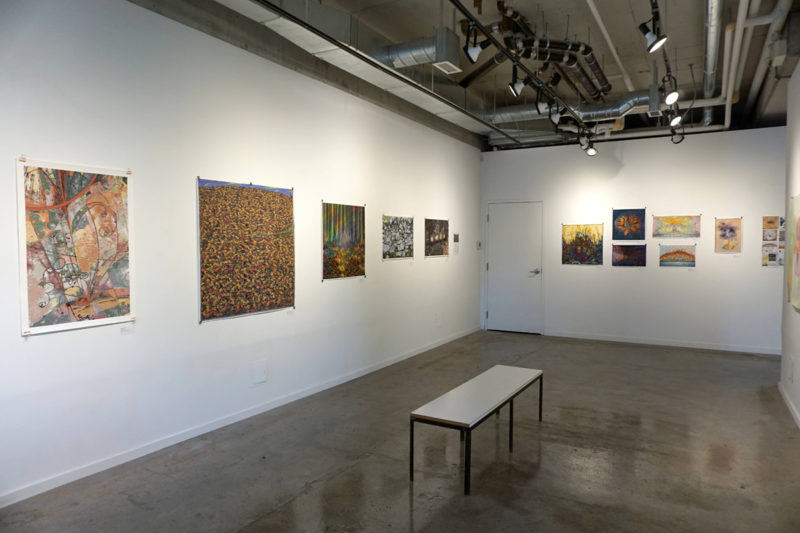
Curated by Kingsburgh, who trained in astronomy, the exhibit defends the validity of visual imagery as a unique modality for the production of knowledge in science as much as art. Yet it also reveals and asserts the intrinsic limits of representation itself, the places where signs fail to capture broader forms of knowing not always reducible to discrete traces and coded markings. On display throughout the back half of the gallery, about a dozen drawings and prints by Griffin were interleaved with as many works by Kingsburgh, bestowing a conversational and dialectical structure to the exhibit. I found myself flitting back and forth between two stylistically contrasting series of pieces, finding reflections in one artist’s work of themes and questions suggested in the other’s: issues of recording and depicting the immeasurably small (and fast) versus viewing and imagining the immeasurably large (and apparently unchanging). The latter is one of the problems tackled by many of Griffin’s drawings, which foreground the formal repetitions of nature and hint at a sense of its boundless infinity. Infused with a palette of yellows, oranges and reds, and the iconography of flames and explosions; cell growth and collective behavior (patterns made by the flight of birds; fish; even waves and leaves), Griffin’s style is best captured in Solid Fire of Vulcan (2019). A frenzied ink on paper sketch of what appears to be a swarm of sharks exploding from a volcanic formation which also emits a fiery orange “smoke” that traces out a set of loops in the sky, Solid Fire of Vulcan connotes the reach of the infinite and eternal. Bold markings in pastel or pencil crayon thicken the area around the eruption with a loose cross-hatching of yellow and green, while the lower fifth of the image, predominantly light blue, suggests we are looking at the expanse of water surrounding an island.
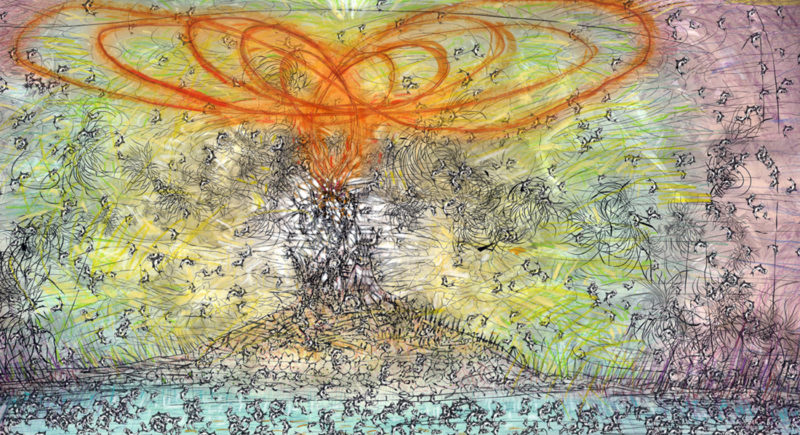
In polar contrast, Robin Kingsburgh’s eclectic, mixed-media practice resists the symbolic and figurative, presenting more visually abstract forms, while maintaining direct material links with the world through photographic processes. A great example is the straightforwardly titled Particle Tracks (2018), a digitally enhanced, coloured print of the frivolous and aleatory lines of subatomic particle trails as captured in a cloud-chamber. While such types of traces have become a familiar face of physics within the popular imagination, their very existence—the result of highly technical mediated processes of scientific instrumentation and inference—speaks eloquently of quandaries involving the existence of entities which become visible only as a function of certain technological or mathematical constructions.
Her more recent drawings and digital photographs of weathered, depressed formations in ancient rock present an intriguing counterpoint to the technological mediation of subatomic particle movements. Whereas Achnabreck Cups (2019), a photograph of etched markings into rock, speaks to the vast, transpersonal perspectives of geological record and ‘deep time,’ Circular Forms, Kintyre (2019), which sits diametrically opposite to these in the gallery, provides an inverse view. The latter employs ‘older’ media in conjunction with human mark-making from the present, thus reversing the direction of the gaze between neolithic times and our own. The use of chalk itself, a form of soft carbon-based rock, manufactured from limestone or gypsum, seems to thread an additional material connection across time, an historical parallax by which we can witness and imagine the travel of the biological record. In the case of the crevices carved gradually, over millennia into the rocks of western Scotland— what is the marker, and what is the medium? Time, climate and matter combine as equal producers and receivers of these forms.
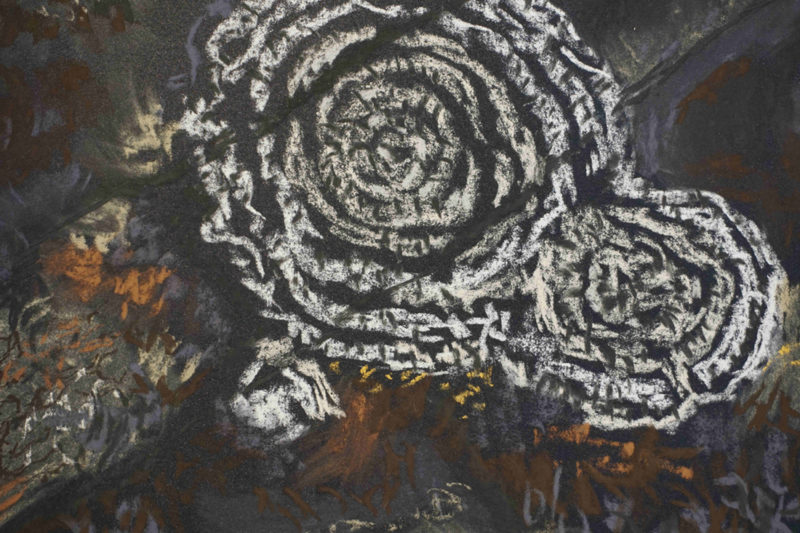
Kingsburgh’s title piece, Time Machines (2019) a diptych constructed from a collage of photographic photocopies and acrylic paint on fibreboard, reveals her attraction to juxtaposition and the gestural, textural aspects of mark-making. This assemblage has been built from overlapping fragments and reiterating forms from simpler works (such as her series involving grids and squares). As a movement from components to complexity, or a self-reflexive gesture, the diptych comments on the show itself, inviting the viewer to play along with its concepts. For me, the piece suggests the translational properties of a machine, a system for taking one form of energy or input and converting it into another. Such mechanisms can also be understood through the idea of a mathematical derivative—a measurement, Kingsburgh has explained, of how a function changes as its input changes. From this perspective, a time machine is anything which transforms one’s temporal frame, widening, narrowing or deepening one’s sense of the now and its points of reference.
Similar ambitions guide the transmedial practice of David Griffin, whose longstanding engagement with the use of drawing as a “thinking tool” for understanding abstract and scientific concepts is most evident in On Fire (2019), a brilliantly self-reflexive piece which refers both to Griffin’s thought process and some of his works concurrently on display. Taking the form of a page from a noir-inspired graphic novel, On Fire reads as a manifesto for pushing on the limits of visual representation. Two panels present the artist seated at his desk, framed from a high-angle shot behind his back, with works in progress spread out around him as he grapples with the unexpectedly provocative ontology of fire. How can one depict this process of instantaneous transformation which has no effective surface or volume? Fire, which wants to fuse itself with everything it encounters, works as a time machine insofar as it transforms both “old” and “new” into absolute difference. As the limit of representation, of what can be fixed at all, it becomes a representation of such limits—the “end of what we know,” as Griffin states. I find myself now in a similar position of unknowing, as a willing participant in this conceptual play of shadows, bearing witness to the silhouette of something beyond the reach of any perspective I might adopt.
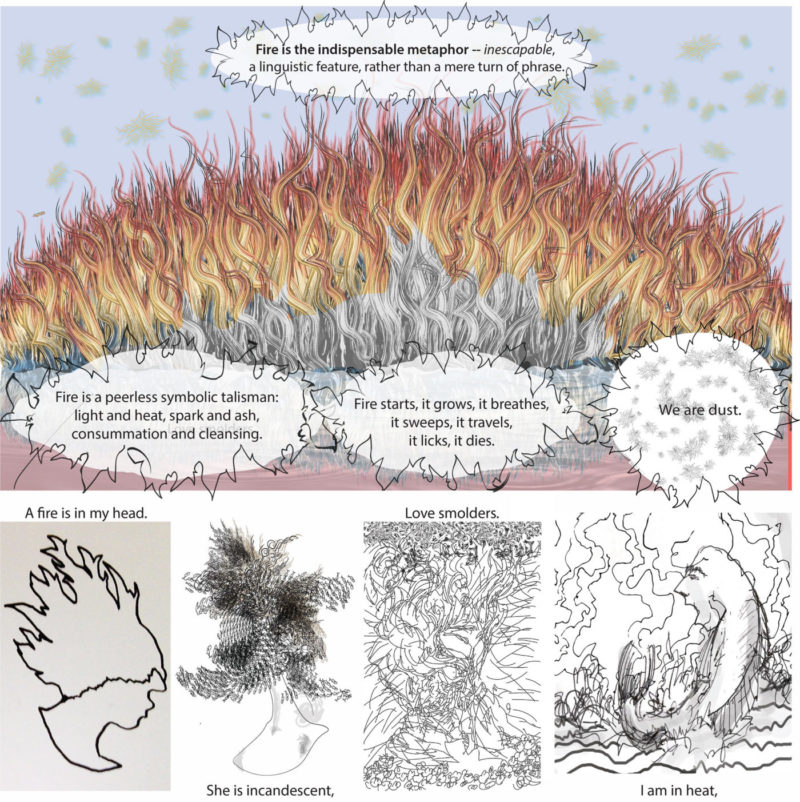
Many of Griffin’s pieces throughout the show can be understood as approximations of this entropic trace which blurs the actual and the virtual at the edge or point of realization. Metaphors grounded in fire and transformation provide the thematic basis for several works: Consummation; Spark; Brightly Burning Breath; Solid Fire of Vulcan. Even An Egg Awakes In Metaphor (2019) merges tropes of embryogenesis and vision (irises, illumination) with the burning plasma of the sun. At the same time, however, the circular structures and devices of recursivity prominent in many of these invoke a symmetrical design at the heart of every explosion and reverberation that challenges the directional orders of time. What at first might have appeared as a literal or “naïve” rendering of fire, then, reveals itself as an image of a conceptual problematic, the possibility of an alternative, non-biological dimension of time, one beyond that usually given to human experience in sequential, chronological form—that which Gilles Deleuze famously argued was merely time’s indirect image (3). With some reflection, I push it further: as the expansive perspective of chronos aligns, momentarily for me, with the intensive perspective of combustion and ignition, I imagine I can see the latent shape of a human eclipse.
If Kingsburgh’s images seem to confirm an analytical continuum proposed by historians of science—one which sorts scientific images according to their proximity to faithful verisimilitude (i.e., photographs of rock specimens) or the integration of symbolic elements and abstract conventions which require specialized knowledge for interpretation (i.e., displays of particle tracks) (4)—Griffin’s do not; yet he takes more direct aim at scientific questions—his engagement with graphical representations of time-symmetry being a task appropriate to physics research. In this research-driven encounter with duration, we are ultimately confronted with the facticity of the human trace; that the time of viewing produces us as temporal objects.
Engaging the viewer not so much through formal, perceptual pleasures, but in something like a game of conceptual parallax, Time Machines insightfully articulates a re-evaluation of mark-making as a deeper problematic in its own right, one which gives visibility to the intractable imbrication of the perceptual and the temporal record.
- David Topper, “Towards an Epistemology of Scientific Illustration,” in Picturing Knowledge: Historical and Philosophical Problems Concerning the Use of Art in Science, ed. Brian S. Baigrie. Toronto: University of Toronto Press, 1996. 215-249.
- Gerald J. Toomer. “Hipparchus on the Distances of the Sun and Moon.” Archive for History of Exact Sciences 14.2 (1974): 126-142. See also Adam G. Riess, et al. “Milky Way Cepheid Standards for Measuring Cosmic Distances and Application to Gaia DR2: Implications for the Hubble Constant.” The Astrophysical Journal 861.2 (2018): 126.
- Gilles Deleuze, Cinema 2: The Time-Image. Trans. Hugh Tomlinson and Robert Galeta. Minneapolis: University of Minneapolis Press, 1989.
- Brian S. Baigrie, “Introduction,” in Picturing Knowledge: Historical and Philosophical Problems Concerning the Use of Art in Science, ed. Brian S. Baigrie. Toronto: University of Toronto Press, 1996. xvii-xxiv.
Time Machines ran from September 17 – 29, 2019 at the Propeller Art Gallery in Toronto, ON.
Feature Image: Achnabreck Cups, 2019 by Robin Kingsburgh. Photo courtesy of the artist.

